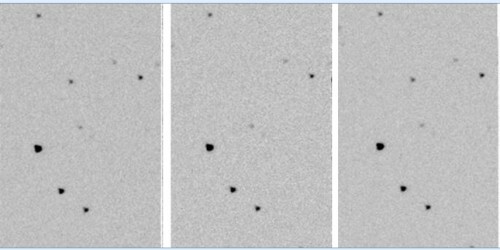A rare astronomical event was observed at the Weiss Observatory of Tel Aviv University: the planet Shabbat, about 50 light-years away from us, was covered by the body of the solar system that belongs to the Pluto family

A rare astronomical event was observed last week (on the night between Tuesday, March 4 and Wednesday) at Tel Aviv University's Weiss Observatory, which operates near Mitzpe Ramon: the occultation of the star Shabbat, about 50 light-years away from us, by a solar system The sun that belongs to the Pluto family. This event is similar to a solar eclipse in which the sun is covered by the moon and a shadow falls on a small area of the earth. The difference here is that the "Sun" is a distant star, and the eclipse is caused by a small planet, an asteroid. The occurrence of the occultation was calculated by the French astronomer Jean Lecacheux as part of the PLANOCCULT international collaboration, but the low degree of accuracy in knowing the asteroid's trajectory and the exact location of the star meant that the forecast of the places from which the event could be observed was from the western edge of Europe to the border of Iran in the east
The asteroid that caused the short eclipse of the star orbits the Sun every 246 years and is known only by its catalog number, 2003 VS2. When it is closest to the Sun, its distance from the Sun is 36 times greater than that of the Earth from the Sun. 2003 VS2 is associated with a family of small bodies known as "Plutins", which are part of a collection of small bodies at the edge of the solar system that form the "Kupier Belt", as their movement around the Sun is very similar to that of Pluto. A measurement by the Herschel satellite (HERSCHEL) shows that its diameter is about 520 km. The asteroid rotates around itself every seven and a half hours, but we do not know what its shape is: round, oblong, or flat.
At Tel Aviv University's Wise Observatory, the scientists prepared to operate two telescopes for the first time
for simultaneous observation of the covering. One telescope, which has been operating since 1971, is equipped with a primary mirror that is one meter in diameter. The second telescope is new and is still in the process of being trained for routine operation. This telescope has a mirror with a diameter of 0.7 meters and is called the "Jay Baum Rich telescope". Both telescopes are equipped with state-of-the-art CCD cameras, which are dozens of times more sensitive than the human eye.
On the night of the event, the forecast spoke of the possibility of the cover up around 22:00 p.m. and the observations began about ten minutes before that. While the large telescope continuously took pictures of the sky every four seconds, the new telescope took pictures of the same area every five seconds; This leads to increased accuracy in determining the start and end dates of coverage. The two astronomers, Dr. Shai Caspi and Dr. Noah Brosh, each watched a different computer screen where the images from one of the telescopes appeared. At a certain moment one of the stars disappeared from the pictures; It was clear that the obscuration had begun and at that moment the obscuration was also observed in the second telescope. After about forty seconds the star appeared again.
Three images of the sky section showing the results of the masking. The right image and the left image represent the situation before and after the obscuration, with the hidden star now visible. The middle image represents the situation at the time of the eclipse: one star, above the center of the image, is missing in the middle image because its light was obscured by the asteroid.
The observational data was analyzed and it shows that the duration of the cover was about 43 seconds. Since the speed of the shadow array that the asteroid threw on Earth was 8.9 km per second, the duration of the cover indicates an asteroid size of about 380 km, smaller than the known diameter. It is possible that the difference is due to the flattened shape of the asteroid, or the position of the observatory that was not "exactly" in the widest area of the body's shadow.
Now the data is being carefully processed, after which the results will be linked to those from a similar event observed in December 2013 from the island of Réunion (La Réunion) in the Indian Ocean. This type of observations allows the determination of the three-dimensional shape of the asteroid and indicates the existence of moons around it, if there are any. The very observation indicates the importance of Tel Aviv University's Weiss Observatory, which was the only one in the world where the obscuration was measured, and with two telescopes at the same time.
